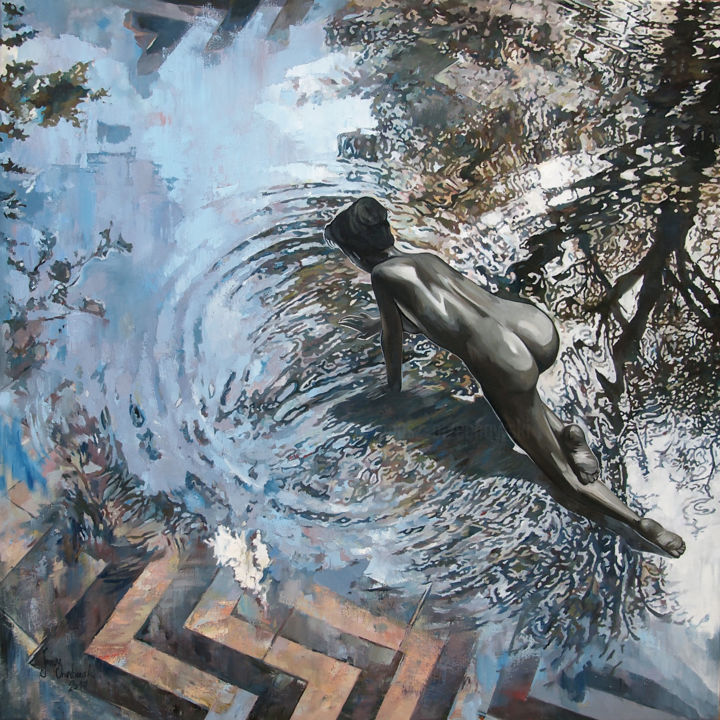Transcending
Einstein
What
invisible songs
sing us
together against the odds of millions,
two
particles collide
in
unison
in
harmony,
with
reverberating resonance
ch'i
and li
time
and space dissolve
and all
things become possible.
Einsteinian
limitation is transcended
the
perfection of
equality,
reciprocity and respect
soars,
resounds
like perfect thunder
across
the universe,
all
things are possible
like
striking lightning,
realisations
of oneness
turn
doubt into affirmation
turn
hate into love
turn
despair into perfect futures.

Time-Space Curl -- Janusz Orzechowski
Albert Einstein received the 1921 Nobel Prize in Physics. While working in the Swiss Patent Office in Bern he developed his special theory of relativity and published his paper on the subject, "Zur Elektrodynamik bewegter Körper" (On the Electrodynamics of Moving Bodies) in 1905. In it he reconciled conflicts between the laws of classical mechanics and those of electromagnetic fields. Objects moving at close to the speed of light would contract in its direction of motion and a clock carried by a moving body would appear to slow down. He originally framed special relativity in terms of kinematics (the study of moving bodies), but in 1908 Hermann Minkowski reinterpreted special relativity in geometric terms as a theory of spacetime; Einstein adopted Minkowski's formalism in his 1915 general theory of relativity, a theory of gravitation that he derived from his earlier work; according to this theory, the observed gravitational attraction between masses results from their warping of space and time.
ReplyDeleteIn Taoism and other Chinese philosophies, ch'I (qi) (“air”) is the circulating life energy inherent in all things; the balance of negative and positive forms in one’s body is believed to be essential for good health. It is the central underlying principle in traditional medicine and martial arts. On the other hand, a “li” is a Chinese unit of distance. The ideogram combines the characters for "field" and "earth" and was established by the Yellow Emperor at the founding of Chinese civilization ca. 2600 BCE and standardized by Yu the Great 600 years later. Although the value varied from state to state, it was about 405 m until the 3rd century, when it was standardized at about 576 meters, and then shortened to 415.8 m in the 1st century. Under the Tang Dynasty (618–907), the li was approximately 323 m. In 1928 Chiang Kaishek adopted the metric system, but Mao Zedong reinstituted the traditional units of measure as an anti-imperialist gesture. The metric system was restored in 1984 but the li was redefined as exactly 500 m. (As late as the 1940s, a li often did not represent a fixed measure but could be longer or shorter depending on the effort required to cover the distance.)